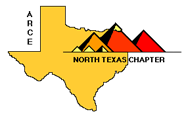
24
FebNorth Texas: News From the Fifth Dynasty: The Uses of Literacy
Presented by: Gayle Gibson, Royal Ontario Museum Emeritus
- 7:30 PM CTNorth Texas
- Southern Methodist UniversityFondren Science Hall Room 123 Dallas, TX
- + Add to Calendar
Lecture Information
 When was the last time you wrote a letter? When was the first time anyone, anywhere, wrote a letter? King Djedkare Izezi of Egypt’s Fifth Dynasty is not as well-known as he should be: he may not have written the very first personal letter, but during his reign, letters and personal stories began to appear. They weren’t tied up with ribbons in an old chest but engraved on the walls of tombs.
When was the last time you wrote a letter? When was the first time anyone, anywhere, wrote a letter? King Djedkare Izezi of Egypt’s Fifth Dynasty is not as well-known as he should be: he may not have written the very first personal letter, but during his reign, letters and personal stories began to appear. They weren’t tied up with ribbons in an old chest but engraved on the walls of tombs.
For over a century, the Fifth Dynasty has been known chiefly for the pyramid of Wenis at Sakkara and the ruined Sun Temples and pyramids of Abusir. Wenis pyramid, from the very end of the Fifth Dynasty, contains the first Pyramid Texts, the oldest religious literature known. As well as texts, hundreds of beautiful limestone statues of seated scribes and loving couples from this time grace the world’s museums. Kings sent expeditions to far off Punt and lovingly tended the myrrh trees that were brought back along with other treasures of East Africa. In the years around 2400-2300 BCE, men in Egypt began to use writing not only for keeping records, and not only for magical and religious purposes, but for the very human pursuits of writing letters and telling stories (and even jokes) from their lives. Tonight, we’ll explore the world of Djedkare Izezi in writing, buildings, images, and even bones.
Speaker Biography
 Gayle Gibson has been reading and studying about Ancient Egypt since she was in grade two. After receiving a B.A. and B.Ed. in English and Drama from the University of Toronto, and teaching high school, she returned to U of T for an M.A. in Egyptian Language and Literature.
Gayle Gibson has been reading and studying about Ancient Egypt since she was in grade two. After receiving a B.A. and B.Ed. in English and Drama from the University of Toronto, and teaching high school, she returned to U of T for an M.A. in Egyptian Language and Literature.
A life-long Torontonian, she taught Ancient History, World Religions, Physical Anthropology and Evolution at the Royal Ontario Museum for almost twenty-five years. During her years at the Museum, she had the honour of representing the Museum many times on television and radio. Since her retirement, she has been working as a Departmental Associate, helping to catalogue and research the collection, particularly the coffins. She has published in both popular and scholarly journals, chiefly about Ancient Egyptian coffins. She continues to lead tours of Egypt for people who really want to walk and climb into and around every possible site. As a result of Covid, she has shifted her night classes in Egyptian history and religion to Zoom.
A long-time member of the Society for the Study of Egyptian Antiquities, she has served as Trustee, President, and is currently a Vice-President of the Society.